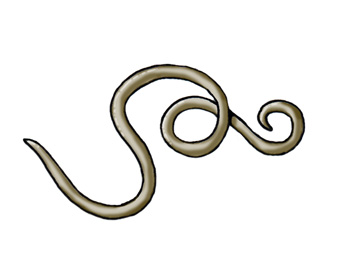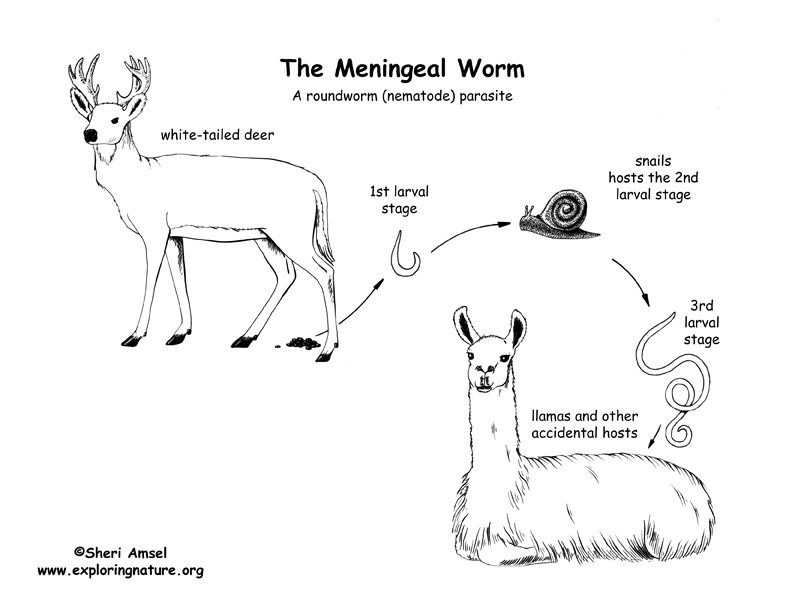

There more than 12,000 species of roundworms. They have a smooth outer wall (are not segmented). Where they occur, they are very plentiful. A shovelful of soil can have hundreds of thousands of roundworms living in it.
Range and Habitat: Nematodes are found throughout the world in all habitats – from saltwater (marine) and freshwater habitats to soil habitats beneath your feet. The most dangerous parasitic roundworm forms are found in tropical climates.
Physical Traits (Anatomy): They are usually less than 2 inches (5cm) long and have a “tube within a tube” body plan made up of a digestive tract. This allows them to take food in at the mouth at one end and pass waste out the anus at the other end. Between the digestive tract tube and the outer wall is a body cavity called the “pseudocoelom.”
They have a simple nervous system made up of a ring of ganglia at one end attached to two simple nerve cords, one on top (dorsal) and one on bottom (ventral) that run the length of the body.
Diet: Roundworms have a variety of lifestyles from carnivore, herbivore, and scavenger to parasites.
Examples of Roundworms:
Most are parasites, however, and many affect humans, like pinworms and hookworms.
Ascaris, an intestinal parasite, lives in the soil in warm climates.
Trichinella roundworms develop in the muscle tissue of animals. Humans can be infected by the worm when they eat undercooked pork. This is called trichinosis and is very serious, as the worm develops cysts in the muscle that cause permanent damage.
The meningeal worm affects deer, llamas and other livestock.
When you research information you must cite the reference. Citing for websites is different from citing from books, magazines and periodicals. The style of citing shown here is from the MLA Style Citations (Modern Language Association).
When citing a WEBSITE the general format is as follows.
Author Last Name, First Name(s). "Title: Subtitle of Part of Web Page, if appropriate." Title: Subtitle: Section of Page if appropriate. Sponsoring/Publishing Agency, If Given. Additional significant descriptive information. Date of Electronic Publication or other Date, such as Last Updated. Day Month Year of access < URL >.
Amsel, Sheri. "Phylum - Nematoda (Roundworms)" Exploring Nature Educational Resource ©2005-2024. December 14, 2024
< http://www.exploringnature.org/db/view/1087 >

